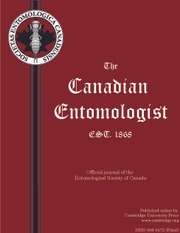No CrossRef data available.
Article contents
Dynamic changes in the physiological characteristics of Coridius chinensis (Hemiptera: Dinidoridae) between diapause and post-diapause development periods
Published online by Cambridge University Press: 19 September 2025
Abstract
In this study, changes in physiological characteristics of Coridius chinensis (Hemiptera: Dinidoridae) during diapause and post-diapause development period were determined. The moisture content of C. chinensis at the beginning of diapause was significantly lower than that at any other stage, and the moisture content during post-diapause development period was significantly higher than that from October to December 2021 and in February and April of the following year. The fat content gradually declined over time. The glycogen content remained at lower levels during diapause but rose sharply during the post-diapause development period, when it became significantly higher than that during diapause. The trehalose content gradually declined in the early stages of diapause but rose greatly in the middle stage, followed by a gradual decline in the late stages and a significant increase during the post-diapause development period. The protein content was at lower levels in the early stages of diapause, significantly lower than that in the middle and late stages of diapause and that during post-diapause development period. The results indicated significant differences in changes in the moisture, fat, carbohydrate, and protein contents between the diapause and post-diapause development periods, with obvious stage characteristics. This study provides a scientific basis for further research on the diapause physiology of C. chinensis.
Information
- Type
- Research Paper
- Information
- Copyright
- © The Author(s), 2025. Published by Cambridge University Press on behalf of Entomological Society of Canada
Footnotes
Authors contributed equally to the paper.
Subject editor: Katie Marshall


